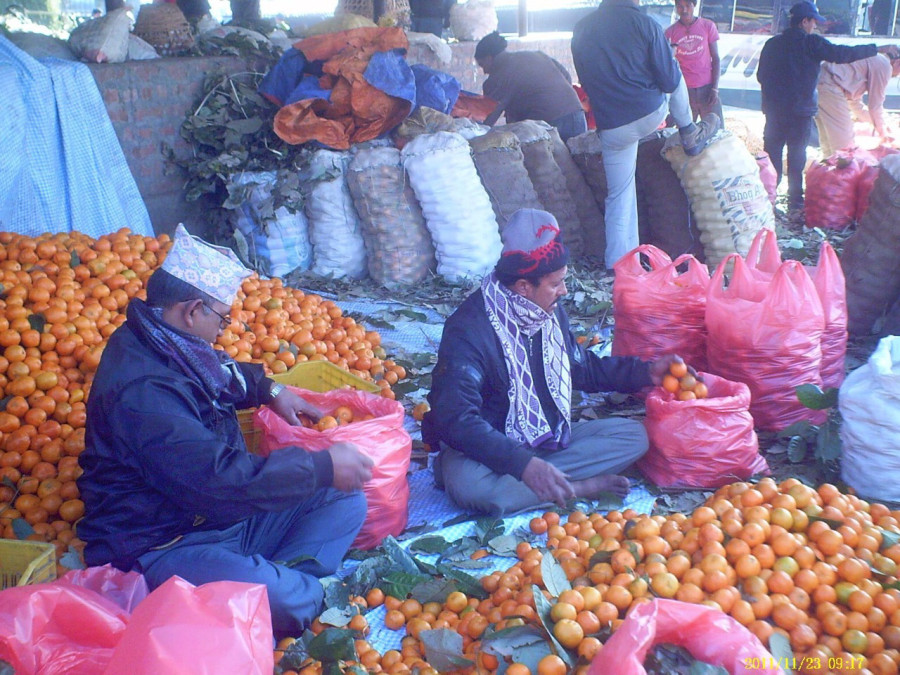Money
Farmers in the eastern hills produce oranges worth Rs1 billion
The hailstorms in April and May and the extended monsoon in September had affected orange yield which is expected to drop 25 percent this year.
Pradeep Menyangbo
The eastern hill region is expected to produce oranges worth Rs1 billion despite a sharp drop in production of the fruit this year.
Production is expected to drop 25 percent.
Laxman Bhattarai, manager at the Dharan-based Agriculture Product Wholesale Market, said that hailstorms in April and May had affected orange yield. Similarly, according to him, old trees are dying in the eastern hills which may have affected the production to some extent.
“Despite a drop in production by 25 percent, the value of citrus in the market has increased,” said Bhattarai. According to him, the sales of oranges this season are expected to bring an extra Rs190 million to farmers' homes this year as compared to last year’s sales.
Until this month, orange farmers from the seven hill districts in the region—Dhankuta, Bhojpur, Terhathum, Khotang, Sankhuwasabha, Panchthar and Taplejung—have sold 8,120 tonnes of oranges worth Rs810 million.
According to Bhattarai, as of now, only 350 tonnes of oranges have been sold at the market in Dharan compared to 1,131 tonnes last year. “Extended monsoon is also one of the reasons behind the drop in the production of oranges this year as it delayed the ripening of the fruit,” said Bhattarai.
There is a high demand for Nepali oranges produced in the eastern region, locally and also in Indian and Bangladesh.
However, since Nepali oranges are not graded, packed, labelled or quarantined, farmers have not been able to sell their produce as per the demand.
Jaya Bahadur Thapa, a farmer from Bodhe, Dhankuta, said, “Since Nepali oranges aren’t graded, packed, labelled or quarantined, we haven’t been able to export our produce to neighbouring countries. Orange farmers could do business of over Rs 1.5 billion if we could export the fruit to India and Bangladesh.”
Another farmer, Mani Rai of Bhojpur, said that no one has expressed interest in establishing a brand for Nepali oranges which has led to limited access to outside markets.
“Many new farmers have started orange production as the eastern region has access to transport facilities relatively,” said Gyan Bahadur Basnet, the head wholesale businessman of the Dharan-based market, “Compared to Indian oranges, Nepali oranges are really sought after in India and Bangladesh. However, we haven’t been able to send our produce there due to complications related to cross-border export.”




 7.12°C Kathmandu
7.12°C Kathmandu















